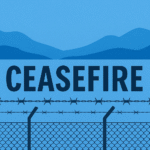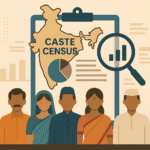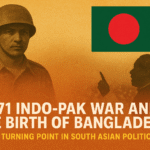Introduction
The rights of people to exist is one of the most profound and universal principles in human civilization. It lies at the intersection of individual human rights and collective rights of communities or states, encompassing moral, philosophical, and legal dimensions.
On one hand, it affirms every individual’s inherent right to life, dignity, and identity. On the other hand, it raises complex questions about whether groups, nations, or states themselves have a “right to exist”. While this notion seems self-evident in political discourse, it is less clear in international law.
This article explores the conceptual meaning, philosophical debates, key theories and proponents, and international law provisions that shape the discourse. It also examines controversies, case studies, and modern challenges in safeguarding the existence of individuals and peoples in today’s world.
1. Understanding the Concept of the Right to Exist
1.1 Definition and Meaning
The phrase “right to exist” can be understood at two levels:
- Individual Right to Exist: Every person has the fundamental right to live, to be recognized as a human being, and to enjoy dignity and freedom. This is expressed in international human rights law, particularly in the Universal Declaration of Human Rights (UDHR) and the International Covenant on Civil and Political Rights (ICCPR).
- Collective or People’s Right to Exist: This refers to a group’s, community’s, or nation’s claim to survive and maintain its identity, culture, and political autonomy. In political discourse, it is often invoked in relation to nation-states or stateless peoples.
The meaning of “existence” here goes beyond mere survival. It implies the protection of identity, freedom from extermination or persecution, and the capacity to live with dignity.
2. Philosophical and Theoretical Foundations
Throughout history, philosophers, political theorists, and legal scholars have debated what it means for individuals and peoples to have the “right to exist.”
2.1 Natural Law and Individual Existence
The roots of the right to exist go back to natural law theory, most famously articulated by John Locke. According to Locke, all humans are born with natural rights—life, liberty, and property—that predate the formation of any government. Governments are created to protect these rights, and when they fail to do so, they lose legitimacy.
Thus, from a natural law perspective, the right to life is inherent, and the duty to respect it is universal. This idea influenced the American Declaration of Independence, the French Declaration of the Rights of Man and Citizen, and eventually the UDHR (1948).
2.2 Hannah Arendt and the “Right to Have Rights”
The German-Jewish philosopher Hannah Arendt deepened the discussion in her seminal book The Origins of Totalitarianism. She observed how stateless people and refugees, stripped of citizenship during the 20th century, lost all meaningful protection despite the existence of “universal” rights.
Arendt argued that before any specific human right, people must have a “right to have rights”—the right to belong to a political community where their humanity is recognized. Without political membership, individuals are reduced to being “human and nothing but human,” left without enforceable rights.
This insight remains vital in understanding the plight of refugees, asylum seekers, and stateless persons today.
2.3 Ernest Renan and Collective Existence
In his famous lecture What is a Nation? (1882), Ernest Renan explained the existence of nations as a “daily plebiscite”—a moral and social unity based on shared memories and collective will. For Renan, a nation’s right to exist was rooted in the ongoing consent and sacrifice of its members, not in divine or historical claims.
2.4 Critical Theory: Agamben and the Refugee Condition
Contemporary theorist Giorgio Agamben expands on Arendt’s work, highlighting how refugees expose the limits of liberal rights frameworks. In his view, the refugee is a “limit figure” that reveals how modern states tie rights to citizenship, leaving those outside the political order vulnerable.
These philosophical discussions show that existence is not only biological but also political—it is tied to belonging, recognition, and community.
3. The Right to Exist in International Law
The rights of people to exist find partial expression in international law, though the extent varies between individual rights and collective or state rights.
3.1 Individual Right to Life and Existence
Several key international instruments enshrine the individual right to exist:
- Universal Declaration of Human Rights (UDHR, 1948)
- Article 3: “Everyone has the right to life, liberty and security of person.”
- Article 15: “Everyone has the right to a nationality.”
- International Covenant on Civil and Political Rights (ICCPR, 1966)
- Article 6: “Every human being has the inherent right to life. This right shall be protected by law. No one shall be arbitrarily deprived of his life.”
- Article 12: freedom of movement and the right to return to one’s country.
- Article 1: “All peoples have the right of self-determination.”
- International Covenant on Economic, Social and Cultural Rights (ICESCR, 1966)
- Article 12: the right to the highest attainable standard of health—necessary for meaningful existence.
- European Convention on Human Rights (ECHR, 1950)
- Article 2: right to life, with procedural duties on states to protect and investigate violations.
- Conventions on Refugees and Stateless Persons
- The 1951 Refugee Convention and the 1954 Convention Relating to the Status of Stateless Persons ensure minimal rights for those deprived of national protection.
Through these instruments, international law recognizes that existence involves both life and legal identity.
3.2 Collective Rights of Peoples
Beyond individuals, peoples—defined as groups with shared identity—have certain rights:
- Self-Determination:
- Enshrined in the UN Charter (Article 1) and ICCPR Article 1.
- Recognizes the right of peoples to freely determine their political status and pursue economic, social, and cultural development.
- Protection Against Genocide:
- The Genocide Convention (1948) prohibits acts committed with intent to destroy a national, ethnic, racial, or religious group. This indirectly affirms a group’s right to survive and exist.
However, self-determination is not absolute. It is often balanced against the principle of territorial integrity of states, leading to conflicts in cases like Kurdistan, Catalonia, or Kashmir.
3.3 Do States Have a Right to Exist?
Unlike individuals or peoples, states as political entities do not have a formally recognized “right to exist” under international law.
- The Montevideo Convention (1933) defines the criteria of statehood:
- Permanent population
- Defined territory
- Government
- Capacity to enter into relations with other states
These are declarative conditions, meaning that statehood is a fact, not a right.
Some early drafts, like the 1949 Draft Declaration on the Rights and Duties of States, included a “state’s right to exist” but later omitted it as unnecessary and tautological.
Therefore, when leaders say “State X has a right to exist,” they are usually making a political statement, not a legal one.
4. Debates and Controversies
4.1 The Political Myth of State’s Right to Exist
The idea that states have a right to exist has been widely used in political conflicts—Israel’s “right to exist” being the most famous example. Critics like Noam Chomsky argue that no state inherently has a “right to exist”; only people have rights, while states are political arrangements that can change.
International law does not guarantee any state’s perpetual existence—it only prohibits unlawful aggression, genocide, or annexation.
4.2 Statelessness and the Refugee Condition
Millions of people today are stateless, such as the Rohingya in Myanmar or the Bidoon in Kuwait. They lack nationality, cannot access basic services, and often live without legal identity.
This creates a “rightless condition” similar to what Hannah Arendt described. While international conventions offer some protection, enforcement remains weak.
4.3 Self-Determination vs. Sovereignty
Peoples seeking independence (e.g., Kurds, Catalans, Palestinians) argue they have a right to exist as nations, but international law prioritizes existing state sovereignty unless there is colonial rule or extreme oppression.
This tension between self-determination and territorial integrity remains unresolved in many regions.
4.4 Contemporary Conflicts
- Israel–Palestine: Both claim a historical and moral “right to exist,” but international law focuses more on self-determination and occupation legality.
- Ukraine–Russia: Russia’s denial of Ukraine’s national identity shows how existential claims are weaponized in war.
- Indigenous Peoples: Many indigenous communities fight for recognition of their existence, lands, and cultural survival.
5. Case Studies
The debate on the rights of people to exist is not merely theoretical—it plays out vividly in real-world conflicts and crises. Examining these case studies reveals how different dimensions of existence—legal, physical, cultural, and political—are threatened in various contexts.
5.1 The Rohingya Crisis
The Rohingya people of Myanmar represent one of the most severe examples of a community whose very existence is under threat. Historically, the Rohingya are a Muslim minority primarily residing in Rakhine State. Despite their centuries-long presence in the region, Myanmar’s 1982 Citizenship Law effectively rendered them stateless by excluding them from the list of recognized ethnic groups.
This denial of citizenship stripped the Rohingya of basic rights:
- They cannot freely travel within Myanmar.
- They lack access to healthcare, education, and employment.
- They are subject to arbitrary arrests and systemic discrimination.
In 2017, a military crackdown—described by the United Nations as a “textbook example of ethnic cleansing”—forced over 700,000 Rohingya to flee to Bangladesh. The violence included mass killings, sexual assaults, and the destruction of villages.
From an international legal perspective, the Genocide Convention (1948) and Universal Declaration of Human Rights (UDHR) prohibit acts that destroy a people’s physical and cultural existence. Yet, despite widespread condemnation, there is no binding enforcement mechanism that has restored their right to exist as a recognized people with legal protection.
The Rohingya crisis underscores how statelessness and targeted violence can combine to erase a community’s legal and physical presence, leaving them in a permanent state of precarity.
5.2 Israel and Palestine
The Israeli–Palestinian conflict is perhaps the most cited example in debates over the “right to exist.”
- Israel’s position: Since its establishment in 1948, Israel has consistently demanded recognition of its “right to exist” as a Jewish state.
- Palestinian position: Palestinians assert their right to self-determination, seeking an independent state and the right of return for refugees displaced in 1948 and 1967.
International law recognizes:
- Both peoples’ right to live in peace and security under the UN Charter.
- The Palestinian right to self-determination affirmed in numerous UN resolutions.
However, no treaty explicitly grants a state a permanent “right to exist.” Instead, states are expected to respect the principles of non-aggression and peaceful coexistence.
The conflict also illustrates how recognition—a political act—is central to existence in the international system. Without mutual recognition, both peoples’ rights remain contested, and the cycle of violence persists.
5.3 The Kurdish Question
The Kurdish people, numbering around 30 million, are spread across Turkey, Iraq, Iran, and Syria, making them one of the world’s largest stateless nations. They share a distinct language, culture, and history, yet they lack an independent state.
- After the collapse of the Ottoman Empire, promises of a Kurdish state in the Treaty of Sèvres (1920) were abandoned in the Treaty of Lausanne (1923), leaving Kurds divided among several states.
- In Turkey, Kurdish identity and language were long suppressed.
- In Iraq, the Kurds gained limited autonomy after decades of persecution, including the Anfal genocide under Saddam Hussein.
The Kurdish case raises the question: Do peoples have a right to secede for their survival?
International law recognizes self-determination mainly in colonial or extreme oppression contexts but generally prioritizes territorial integrity of existing states. This leaves the Kurds without a legally enforceable path to independence, despite their strong national identity and repeated struggles for autonomy.
Thus, the Kurdish question highlights how political realities override theoretical rights, leaving millions in limbo between aspiration and recognition.
5.4 Ukraine’s Nationhood
The Russia–Ukraine war demonstrates how denying a people’s existence can be weaponized to justify aggression.
- Russian leadership has repeatedly claimed that Ukraine is “not a real nation”, portraying Ukrainians as historically part of Russia.
- This narrative served as a pretext for the 2014 annexation of Crimea and the full-scale invasion in 2022.
However, international law—particularly the UN Charter—prohibits the use of force to alter borders or deny a nation’s self-determination.
The global response to Russia’s actions, including sanctions and diplomatic isolation, underscores that while states may not have an explicit “right to exist”, aggression and annexation are unequivocally illegal.
Ukraine’s resistance and the international community’s support reaffirm the principle that peoples have a right to maintain their identity, sovereignty, and independence against external erasure.
6. Modern Challenges
In the 21st century, the right to exist faces new and complex threats beyond traditional conflicts.
6.1 Refugee and Migrant Crises
Today, there are over 30 million refugees and at least 10 million stateless persons worldwide, according to UNHCR. Armed conflicts, political persecution, and economic instability force millions from their homes.
When people lose their homeland, they often also lose:
- Legal protection and nationality
- Access to healthcare, education, and work
- Social and cultural belonging
The Syrian civil war, the Afghan displacement, and the Venezuelan migration crisis are prime examples.
Refugees live in a legal vacuum—while international law (1951 Refugee Convention) grants some rights, enforcement depends on host states. This creates a fragile existence, echoing Hannah Arendt’s observation that without political membership, rights are meaningless.
6.2 Climate Change and Existential Threats
Climate change introduces new existential dilemmas.
Small island nations like Kiribati, Tuvalu, and the Maldives face literal extinction due to rising sea levels. If their territories disappear, what happens to:
- Their sovereignty?
- Their citizenship and national identity?
- Their statehood under international law?
Currently, international law has no clear answer. Some proposals include creating “ex-situ nations” or granting special legal status to climate-threatened states.
This issue expands the meaning of the right to exist beyond traditional notions of violence or oppression, highlighting environmental and planetary survival as part of existence.
6.3 Digital Identity and Surveillance
In the digital age, existence has a new dimension—digital identity.
- Massive data breaches, surveillance capitalism, and identity theft threaten people’s autonomy and privacy.
- Authoritarian regimes use digital surveillance to control populations, eroding freedom of thought and expression.
This raises profound questions:
- Does the right to exist now include the right to digital self-determination?
- Should international law recognize data protection and algorithmic fairness as fundamental rights?
As life increasingly moves online, digital existence becomes intertwined with physical and legal existence, requiring new frameworks to protect individuals and communities.
Summary of Implications
These case studies and challenges illustrate that the right to exist is multidimensional:
- Physical survival (freedom from genocide and violence)
- Legal identity (citizenship, nationality)
- Cultural and political recognition (self-determination, autonomy)
- Environmental survival (climate-threatened nations)
- Digital existence (identity and privacy in cyberspace)
Ensuring these layers of existence requires stronger international cooperation, reform of outdated laws, and innovative approaches to emerging threats.
7. Future Directions
To strengthen the rights of people to exist, the international community must:
- Enhance protection for stateless persons, granting them legal identity.
- Clarify self-determination norms to better address non-colonial cases.
- Develop frameworks for climate refugees and disappearing states.
- Promote global citizenship concepts, ensuring a basic “right to have rights” beyond national borders.
A more inclusive understanding of belonging and existence is needed in a globalized world.
Conclusion
The rights of people to exist represent one of the most fundamental yet complex areas of human rights discourse.
- Individually, the right to life is recognized universally in treaties and moral philosophy.
- Collectively, peoples have the right to self-determination and protection from genocide, but this does not translate into an unconditional “right of states to exist.”
- Politically, existence is tied to recognition, belonging, and community—as Hannah Arendt warned, rights are meaningless without a political framework to guarantee them.
In today’s world of refugee crises, statelessness, nationalist conflicts, and climate change, the debate over existence is more urgent than ever. Ensuring that every human being and every community has the chance to live with dignity remains a central challenge for humanity.
See also Right to Self Determination.
📚 References
Arendt, H. (1951). The origins of totalitarianism. Schocken Books.
Agamben, G. (1998). Homo sacer: Sovereign power and bare life. Stanford University Press.
Chomsky, N. (2005). Imperial ambitions: Conversations on the post-9/11 world. Metropolitan Books.
Locke, J. (1689). Two treatises of government. Awnsham Churchill.
Renan, E. (1882). What is a nation? Sorbonne University.
United Nations. (1945). Charter of the United Nations. Retrieved from https://www.un.org/en/about-us/un-charter
United Nations. (1948). Universal Declaration of Human Rights. Retrieved from https://www.un.org/en/about-us/universal-declaration-of-human-rights
United Nations. (1948). Convention on the prevention and punishment of the crime of genocide. Retrieved from https://www.un.org/en/genocideprevention/documents/Genocide%20Convention.pdf
United Nations. (1951). Convention relating to the status of refugees. Retrieved from https://www.unhcr.org/1951-refugee-convention.html
United Nations. (1954). Convention relating to the status of stateless persons. Retrieved from https://www.unhcr.org/statelessness-convention.html
United Nations. (1966). International Covenant on Civil and Political Rights. Retrieved from https://www.ohchr.org/en/instruments-mechanisms/instruments/international-covenant-civil-and-political-rights
United Nations. (1966). International Covenant on Economic, Social and Cultural Rights. Retrieved from https://www.ohchr.org/en/instruments-mechanisms/instruments/international-covenant-economic-social-and-cultural-rights
Montevideo Convention on the Rights and Duties of States. (1933). Retrieved from https://www.ilsa.org/Jessup/Jessup15/Montevideo%20Convention.pdf
Weissbrodt, D. (2008). The human rights of non-citizens. Oxford University Press.
Human Rights Watch. (n.d.). World report on human rights. Retrieved from https://www.hrw.org
Amnesty International. (n.d.). Universal Declaration of Human Rights explained. Retrieved from https://www.amnesty.org





